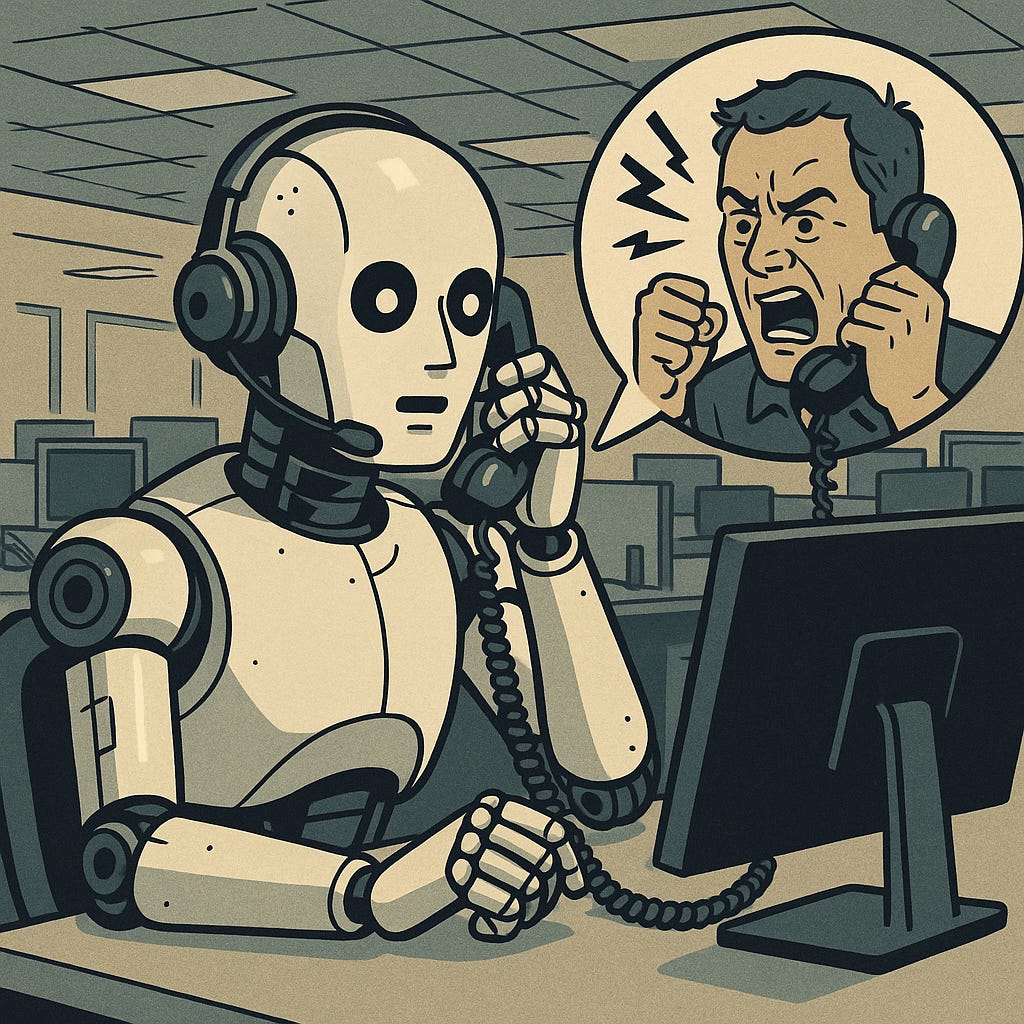New data on bots in customer service
It's not going as well as I'd hoped but for a surprising reason
This week I co-authored a piece with my colleague Jason Barro. Jason leads NPS Prism, Bain’s benchmarking platform that uses surveys to measure customer experience at a very detailed level across industries.1 Recently, Jason has been digging into the impact of new GenAI-powered chat and voice bots on customer satisfaction. Spoiler: it’s not going that well but probably not for the reason you think.
I’d strongly encourage you to go read the article, including some interesting data about customer satisfaction in digital channels. I’ll summarize a couple of the key insights below:
The Promise vs. the Reality
The good news is that chatbots and voicebots are capable of performing a wide range of tasks, especially simpler tasks. The bad news is that because many industries, such as banking, have been pushing people into digital channels for years, people are mostly calling for more complex problems.
If you look at the chart in the article, the data is pretty clear. For example, in banking, digital/bot channels have NPS that’s 5 points higher on average for simple journeys and 13 points lower for complex journeys.
But, the interesting part is that it’s not that the bots can’t do the complex tasks! It’s that even when they do them as well as a human, people still get upset.
Can I speak to your robot’s supervisor?
Even when humans handle complex situations, the outcome isn’t always satisfying. Think about disputing a fee. You might call a human agent, who says no. You might ask for their supervisor, who also says no. Frustrating, but at least you got your answer and move on. Maybe you also got to growl or outright yell at someone to make yourself feel better.2
Now imagine the exact situation with a bot. The bot says no. Do you accept that? Probably not. Most people feel they have to escalate to a human—if only to have someone to argue with.
For many of these complex use cases, that’s the problem. It’s not that the bot is worse than a person. It’s that the customer doesn’t like the outcome and won’t accept that bad outcome from a bot.
So what should companies do?
Do smarter triage of issues. When someone calls, they talk to a bot to explain their problem. Then
For straightforward, low-stakes issues, let the bots run
For complex or high-stakes issues—like disputes—a human is immediately brought in. That human will have an AI co-pilot that can get them up to speed on the customer’s issue and help them resolve it quickly
This hybrid approach doesn’t just protect customer satisfaction; it also makes the best use of AI. Human agents can lean on AI “co-pilots” to surface information faster, draft responses, and handle routine parts of a workflow. That way, the customer gets a real person when they need it, but that person is much more efficient.
The Bottom Line
By forcing bots into situations where customers won’t accept them, companies are creating huge customer service problems. The path forward isn’t to rip bots out. Instead, companies need to understand the customer journeys, map the pain points, and match the channel to the need.
If you’ve had experience with robot customer service agents at companies you work at or invest in or just as a consumer let me know in the comments or send a message.
Note: The opinions expressed in this article are my own and do not represent the views of Bain & Company.
For readers who aren’t familiar, NPS stands for Net Promoter Score, a widely used metric that asks customers how likely they are to recommend a product or service to a friend or colleague on a scale of 0 to 10. You’ve probably been asked this thousands of times because it’s a useful measure of customer satisfaction and loyalty.
For the record, I don’t think you should be rude to people as long as they are being polite, but we can see in the survey data, that for some people, yelling is important to them.




What stands out here is the operational implication: it’s not about whether bots can technically resolve complex issues, it’s about whether customers will accept the outcome from them. That gap between capability and perception drives cost-to-serve and churn risk. The hybrid model you outline isn’t just a CX fix, it’s also the most pragmatic way to scale without eroding trust.